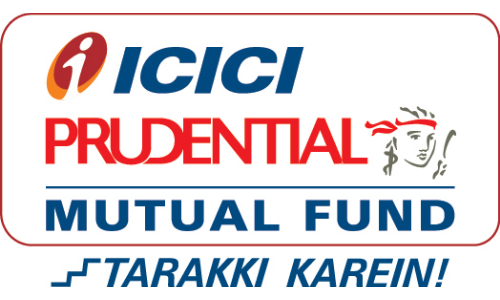
 +91-22-48913909
+91-22-48913909
Table of Contents
Top 4 Best Floating Rate Funds 2025
A floating rate fund invests in financial securities that pay a floating or variable rate of interest. A floating rate fund that may be a Mutual Fund or an exchange-traded fund (ETF) invests in Bonds and financial instruments whose interest payments fluctuate with the level of the Underlying interest rate.
As a result, a fixed-rate investment will typically provide a steady and predictable Income. On the other hand, fixed-rate investments lag behind the Market as interest rates rise since their returns are fixed.
As per Security and Exchange Board of India (SBEI) norms, Floater Fund should invest a minimum of 65 percent of its total assets in the floating rate instrument.
In an environment of rising rates, the floating rate funds strive to provide investors with a variable interest income. As a result, as investors seek to increase the yield on their portfolios, floating-rate funds have grown in favour.
What are Floating Rate Funds?
The floating rate instrument is considered to be an attractive instrument for investors with a conservative portion. This fund invests a major portion of its corpus in floating rate instruments and rest in Fixed Income securities. They are least risky in terms of interest rate. Unlike other debt funds, floating rate funds do not react to the changing interest rates. When the Government of India issues bond in the market, they have a fixed coupon rate, whereas, floating rate securities have variable interest rates. These floating rate interest increases or decreases based on the Reference Rate. To benefit the most, one should invest in these funds when interest rates are expected to rise.
But, being a Debt fund, the credit risk in the fund still remains. Credit risk arises when a company that has issued the debt instruments does not make regular payments. In such cases, it has a major impact on the fund, depending on how much portion the fund has in the Portfolio. Hence, it is suggested to be in debt instruments with a rating higher credit rating.
There are two kinds of floating rate funds— short-term and long-term. The portfolio of short-term floating funds is normally skewed towards short-term maturities and the portfolio of the long-term plan is skewed towards longer-term maturities.
Talk to our investment specialist
How to Invest in Floating Rate Funds Online?
Open Free Investment Account for Lifetime at Fincash.com.
Complete your Registration and KYC Process
Upload Documents (PAN, Aadhaar, etc.). And, You are Ready to Invest!
Work of Floating Rate Fund
Even though there is no formula for calculating a floating rate fund, it can be made up of various investments. Corporate bonds, preferred stocks, and loans with maturities ranging from one month to five years are examples of floating-rate funds. Corporate loans and mortgages can also be included in floating rate funds.
Floating rate loans refer to Bank loans to businesses. These loans are occasionally bundled and sold to investors as a fund. Floating rate loans are related to securities backed by mortgages, the packaged mortgages into which investors can buy and get an overall return rate from the fund's various mortgage rates.
Senior debt, such as floating-rate loans, has a more extraordinary claim on a company's assets in case of a Default. However, the term "senior" does not refer to credit quality; instead, it refers to the sequence in which creditors might claim a firm's assets to repay a debt if the company defaults. For example, floating-rate funds may invest in the floating rate bonds, the debt products in which the interest paid changes over time.
What to Infer from a Floating Rate Fund?
When compared to a fund or instrument with a fixed payment rate or fixed bond coupon rate, the primary advantage of a floating rate fund is its lower susceptibility to interest rate swings. As a result, investors choose floating rate funds to get a higher degree of interest or coupon payments when interest rates rise.
Floating rate funds are a good choice for the fixed income or conservative part of your portfolio. Floating rate debt, such as bonds and loans, can be held in a floating rate fund. These funds, like other credit funds, are administered with a variety of aims. For example, credit quality and duration can be targeted with strategies. The rates held in a floating rate fund and payable on a floating rate instrument adjust in response to a set of parameters or a defined interest rate level.
Floating rate funds are less susceptible to duration risk. The risk that the rate of interest will go up while an investor holds a fixed-income investment, causing them to miss higher market rates, is known as duration risk.
The income created by the underlying investments of a variable rate fund is handled by the portfolio managers and distributed to shareholders regularly. In addition, income and Capital gains may be distributed. Monthly payments are common, but they can also be made semi-annually, quarterly, or annually.
Aside from lower interest rate sensitivity and flexibility for the reflection of current interest rates, a floating rate fund allows an investor to diversify fixed-income investments, as those instruments typically make up the majority of bond holdings for the majority of the investors. Another advantage of a variable rate fund is that it allows an investor to purchase a diversified bond or loan portfolio for a low investment threshold instead of Investing in individual products for a higher dollar amount.
Investors must ensure that the securities in a variable rate fund are appropriate for their risk tolerance while reviewing the fund. Floating rate funds carry various risk levels across the credit quality spectrum, with high-yielding, lower-credit-quality investments posing significantly more significant hazards. However, with greater threats comes the possibility of greater reward.
Best Floating Rate Funds 2025
Fund NAV Net Assets (Cr) 3 MO (%) 6 MO (%) 1 YR (%) 3 YR (%) 2023 (%) Debt Yield (YTM) Mod. Duration Eff. Maturity Aditya Birla Sun Life Floating Rate Fund - Long Term Growth ₹343.773
↑ 0.11 ₹13,275 2.6 4.3 8.4 7.3 7.9 7.5% 1Y 25D 1Y 11M 26D Nippon India Floating Rate Fund Growth ₹44.7248
↑ 0.03 ₹7,646 3.1 4.8 9.4 7.3 8.2 7.51% 2Y 6M 18D 3Y 6M ICICI Prudential Floating Interest Fund Growth ₹419.48
↑ 0.16 ₹6,964 2.5 4.1 8.4 7.5 8 7.86% 1Y 4M 28D 4Y 7M 17D Note: Returns up to 1 year are on absolute basis & more than 1 year are on CAGR basis. as on 23 Apr 25
The primary objective of the schemes is to generate regular income through investment in a portfolio comprising substantially of floating rate debt / money market instruments. The schemes may invest a portion of its net assets in fixed rate debt securities and money market instruments. Aditya Birla Sun Life Floating Rate Fund - Long Term is a Debt - Floating Rate fund was launched on 25 Mar 09. It is a fund with Moderately Low risk and has given a Below is the key information for Aditya Birla Sun Life Floating Rate Fund - Long Term Returns up to 1 year are on (Erstwhile Reliance Floating Rate Fund - Short Term Plan) The primary objective of the scheme is to generate regular income through investment in a portfolio comprising substantially of Floating Rate Debt Securities (including floating rate securitized debt, Money Market Instruments and Fixed Rate Debt Instruments swapped for floating rate returns). The scheme shall also invest in Fixed rate Debt Securities (including fixed rate Securitized Debt, Money Market Instruments and Floating Rate Debt Instruments swapped for fixed returns). Nippon India Floating Rate Fund is a Debt - Floating Rate fund was launched on 27 Aug 04. It is a fund with Moderately Low risk and has given a Below is the key information for Nippon India Floating Rate Fund Returns up to 1 year are on (Erstwhile ICICI Prudential Savings Fund) The scheme aims to generate income consistent with the prudent risk from a portfolio comprising floating rate debt instruments, fixed rate debt instruments swapped for floating rate return, and also fixed rate instruments & money market instruments. ICICI Prudential Floating Interest Fund is a Debt - Floating Rate fund was launched on 18 Nov 05. It is a fund with Moderate risk and has given a Below is the key information for ICICI Prudential Floating Interest Fund Returns up to 1 year are on 1. Aditya Birla Sun Life Floating Rate Fund - Long Term
CAGR/Annualized return of 8% since its launch. Ranked 14 in Floating Rate category. Return for 2024 was 7.9% , 2023 was 7.5% and 2022 was 4.8% . Aditya Birla Sun Life Floating Rate Fund - Long Term
Growth Launch Date 25 Mar 09 NAV (23 Apr 25) ₹343.773 ↑ 0.11 (0.03 %) Net Assets (Cr) ₹13,275 on 31 Mar 25 Category Debt - Floating Rate AMC Birla Sun Life Asset Management Co Ltd Rating ☆☆☆☆ Risk Moderately Low Expense Ratio 0.46 Sharpe Ratio 2.35 Information Ratio 0 Alpha Ratio 0 Min Investment 1,000 Min SIP Investment 1,000 Exit Load NIL Yield to Maturity 7.5% Effective Maturity 1 Year 11 Months 26 Days Modified Duration 1 Year 25 Days Growth of 10,000 investment over the years.
Date Value 31 Mar 20 ₹10,000 31 Mar 21 ₹10,711 31 Mar 22 ₹11,198 31 Mar 23 ₹11,804 31 Mar 24 ₹12,715 31 Mar 25 ₹13,723 Returns for Aditya Birla Sun Life Floating Rate Fund - Long Term
absolute basis & more than 1 year are on CAGR (Compound Annual Growth Rate) basis. as on 23 Apr 25 Duration Returns 1 Month 1.4% 3 Month 2.6% 6 Month 4.3% 1 Year 8.4% 3 Year 7.3% 5 Year 6.6% 10 Year 15 Year Since launch 8% Historical performance (Yearly) on absolute basis
Year Returns 2023 7.9% 2022 7.5% 2021 4.8% 2020 3.6% 2019 8.6% 2018 8.6% 2017 7.5% 2016 6.9% 2015 9.5% 2014 8.9% Fund Manager information for Aditya Birla Sun Life Floating Rate Fund - Long Term
Name Since Tenure Kaustubh Gupta 20 Jun 14 10.79 Yr. Harshil Suvarnkar 22 Mar 21 4.03 Yr. Data below for Aditya Birla Sun Life Floating Rate Fund - Long Term as on 31 Mar 25
Asset Allocation
Asset Class Value Cash 22.01% Debt 77.71% Other 0.28% Debt Sector Allocation
Sector Value Corporate 69.75% Government 23.21% Cash Equivalent 6.77% Credit Quality
Rating Value AAA 100% Top Securities Holdings / Portfolio
Name Holding Value Quantity 7.93% Govt Stock 2033
Sovereign Bonds | -7% ₹939 Cr 91,308,500 LIC Housing Finance Ltd
Debentures | -2% ₹318 Cr 3,250 ICICI Home Finance Limited
Debentures | -2% ₹250 Cr 25,000 Bajaj Housing Finance Limited
Debentures | -2% ₹242 Cr 24,000 National Bank for Agriculture and Rural Development
Domestic Bonds | -2% ₹232 Cr 5,000
↑ 5,000 Rec Limited
Debentures | -2% ₹224 Cr 22,500 Rural Electrification Corporation Limited
Debentures | -2% ₹224 Cr 22,500 National Bank For Agriculture And Rural Development
Debentures | -2% ₹201 Cr 20,000
↑ 5,000 Hdb Financial Services Limited
Debentures | -2% ₹200 Cr 20,000 Small Industries Development Bank Of India
Debentures | -2% ₹200 Cr 20,000 2. Nippon India Floating Rate Fund
CAGR/Annualized return of 7.5% since its launch. Ranked 32 in Floating Rate category. Return for 2024 was 8.2% , 2023 was 7.2% and 2022 was 3.8% . Nippon India Floating Rate Fund
Growth Launch Date 27 Aug 04 NAV (23 Apr 25) ₹44.7248 ↑ 0.03 (0.08 %) Net Assets (Cr) ₹7,646 on 31 Mar 25 Category Debt - Floating Rate AMC Nippon Life Asset Management Ltd. Rating ☆☆☆ Risk Moderately Low Expense Ratio 0.6 Sharpe Ratio 2.16 Information Ratio 0 Alpha Ratio 0 Min Investment 5,000 Min SIP Investment 100 Exit Load 0-1 Months (0.5%),1 Months and above(NIL) Yield to Maturity 7.51% Effective Maturity 3 Years 6 Months Modified Duration 2 Years 6 Months 18 Days Growth of 10,000 investment over the years.
Date Value 31 Mar 20 ₹10,000 31 Mar 21 ₹10,907 31 Mar 22 ₹11,402 31 Mar 23 ₹11,897 31 Mar 24 ₹12,824 31 Mar 25 ₹13,888 Returns for Nippon India Floating Rate Fund
absolute basis & more than 1 year are on CAGR (Compound Annual Growth Rate) basis. as on 23 Apr 25 Duration Returns 1 Month 1.8% 3 Month 3.1% 6 Month 4.8% 1 Year 9.4% 3 Year 7.3% 5 Year 6.8% 10 Year 15 Year Since launch 7.5% Historical performance (Yearly) on absolute basis
Year Returns 2023 8.2% 2022 7.2% 2021 3.8% 2020 3.7% 2019 11.3% 2018 9% 2017 5.8% 2016 5.9% 2015 9% 2014 8.6% Fund Manager information for Nippon India Floating Rate Fund
Name Since Tenure Vikash Agarwal 14 Sep 24 0.54 Yr. Data below for Nippon India Floating Rate Fund as on 31 Mar 25
Asset Allocation
Asset Class Value Cash 4.11% Debt 95.61% Other 0.28% Debt Sector Allocation
Sector Value Corporate 64.77% Government 30.83% Cash Equivalent 4.11% Credit Quality
Rating Value AAA 100% Top Securities Holdings / Portfolio
Name Holding Value Quantity Small Industries Development Bank Of India
Debentures | -5% ₹352 Cr 35,000 Jamnagar Utilities & Power Private Limited
Debentures | -4% ₹274 Cr 2,800 Indian Railway Finance Corporation Limited
Debentures | -3% ₹252 Cr 25,000 Rural Electrification Corporation Limited
Debentures | -3% ₹250 Cr 25,000 National Bank For Agriculture And Rural Development
Debentures | -3% ₹221 Cr 22,000 LIC Housing Finance Ltd
Debentures | -3% ₹217 Cr 2,100 State Bank Of India
Debentures | -3% ₹213 Cr 2,150 7.53% Govt Stock 2034
Sovereign Bonds | -3% ₹212 Cr 21,000,000 08.37 MP Sdl 2028
Sovereign Bonds | -3% ₹209 Cr 20,000,000 7.17% Govt Stock 2030
Sovereign Bonds | -3% ₹204 Cr 20,000,000 3. ICICI Prudential Floating Interest Fund
CAGR/Annualized return of 7.7% since its launch. Ranked 35 in Floating Rate category. Return for 2024 was 8% , 2023 was 7.7% and 2022 was 4.3% . ICICI Prudential Floating Interest Fund
Growth Launch Date 18 Nov 05 NAV (23 Apr 25) ₹419.48 ↑ 0.16 (0.04 %) Net Assets (Cr) ₹6,964 on 31 Mar 25 Category Debt - Floating Rate AMC ICICI Prudential Asset Management Company Limited Rating ☆☆☆ Risk Moderate Expense Ratio 1.29 Sharpe Ratio 1.46 Information Ratio 0 Alpha Ratio 0 Min Investment 5,000 Min SIP Investment 100 Exit Load NIL Yield to Maturity 7.86% Effective Maturity 4 Years 7 Months 17 Days Modified Duration 1 Year 4 Months 28 Days Growth of 10,000 investment over the years.
Date Value 31 Mar 20 ₹10,000 31 Mar 21 ₹10,804 31 Mar 22 ₹11,238 31 Mar 23 ₹11,862 31 Mar 24 ₹12,814 31 Mar 25 ₹13,831 Returns for ICICI Prudential Floating Interest Fund
absolute basis & more than 1 year are on CAGR (Compound Annual Growth Rate) basis. as on 23 Apr 25 Duration Returns 1 Month 1.4% 3 Month 2.5% 6 Month 4.1% 1 Year 8.4% 3 Year 7.5% 5 Year 6.9% 10 Year 15 Year Since launch 7.7% Historical performance (Yearly) on absolute basis
Year Returns 2023 8% 2022 7.7% 2021 4.3% 2020 3.8% 2019 9.5% 2018 8.4% 2017 6.6% 2016 6.8% 2015 8.9% 2014 8.1% Fund Manager information for ICICI Prudential Floating Interest Fund
Name Since Tenure Ritesh Lunawat 13 Sep 24 0.55 Yr. Darshil Dedhia 12 Jun 23 1.8 Yr. Data below for ICICI Prudential Floating Interest Fund as on 31 Mar 25
Asset Allocation
Asset Class Value Cash 4.89% Debt 94.66% Other 0.45% Debt Sector Allocation
Sector Value Corporate 53.35% Government 41.31% Cash Equivalent 4.89% Credit Quality
Rating Value AA 32.78% AAA 67.22% Top Securities Holdings / Portfolio
Name Holding Value Quantity 7.93% Govt Stock 2033
Sovereign Bonds | -27% ₹1,959 Cr 190,405,390
↓ -5,909,090 7.53% Govt Stock 2034
Sovereign Bonds | -8% ₹550 Cr 54,446,560
↓ -17,000,000 LIC Housing Finance Limited
Debentures | -5% ₹366 Cr 3,650 National Bank For Agriculture And Rural Development
Debentures | -5% ₹330 Cr 33,000
↑ 5,000 Oberoi Realty Ltd.
Debentures | -3% ₹200 Cr 20,000 Muthoot Finance Limited
Debentures | -3% ₹200 Cr 20,000 Muthoot Finance Limited
Debentures | -3% ₹191 Cr 19,000 Mankind Pharma Ltd
Debentures | -2% ₹155 Cr 15,500 Tata Housing Development Company Limited
Debentures | -2% ₹150 Cr 15,000 Tata Housing Development Company Limited 8.2175%
Debentures | -2% ₹125 Cr 12,500
Advantages
Some of the benefits of Floating Rate Funds are:
- Price Stability- As floating rate funds are tied to current rates; the price of the underlying securities doesn’t fluctuate in response to changes in the interest rates.
- Better Yield- Floating funds tend to offer better yields than those of Certificate of Deposits (CDs). This can be a better idea for those who want to earn returns in a short duration.
- Moderate Risk- Debt funds are anytime less risky than Equity Funds. When it comes to floater funds these are less risky than other debt funds, as they don’t carry interest rate risk. However, diversification of the portfolio significantly reduces the risk of the portfolio.
Limitations
Floating rate funds may hold corporate bonds near to junk status or loans in danger of default. Although floating funds offer higher returns in a rising rate environment (because they move with rates), investors must assess the dangers of investing in the funds and investigate the fund holdings. Other short-term bond funds that invest solely in Treasuries exist, although they may have a fixed rate or a lower yield than floating rate funds. Before making a decision, investors must assess the risks and rewards of each investment.
How to Select Best Floating Rate Funds?
Some of the ideal ways to choose best floating rate funds are:
- Look at the past performances of the fund, typically of past 1-3 years. The fund with the most stable and consistent performance is the one to go with
- Ideally, one should go with the fund that has an Asset Under Management (AUM) > INR 100 Cr
- Invest in funds that invests in high credit-rating companies
All efforts have been made to ensure the information provided here is accurate. However, no guarantees are made regarding correctness of data. Please verify with scheme information document before making any investment.












Great article and website. Covered in details